Ohio falls into USDA hardiness zones 5 and 6. Zone 5 is mostly in the center, with Zone 6 spread around Ohio’s borders. A few exceptions lie in the northwestern and northeastern corners, plus a small section of the west. This means peak fall is around the end of September. Lots of plants bloom, then! Here are the 11 most colorful fall-blooming flowers in Ohio and how to take care of them.
1. Chrysanthemums
Colorful mums are one of fall’s hardiest flowers. Choose from white, peach, yellow, red, orange, blue, or burgundy late-blooming fall mums to complement your yard’s color scheme and Halloween displays.
Depending on the variety, mums reach three to four feet tall. They grow across summer into fall, or it’s possible to purchase late-blooming cultivars when temperatures begin to dip. If you’re buying mums for fall, plant them at the end of summer when the soil is still warm. This gives them time to establish roots before the chill arrives.
Choose a sunny spot in well-drained soil or a heavy container, and don’t let them dry out. Add a little fertilizer to boost the display and deadhead spent blooms to keep displays fresh.
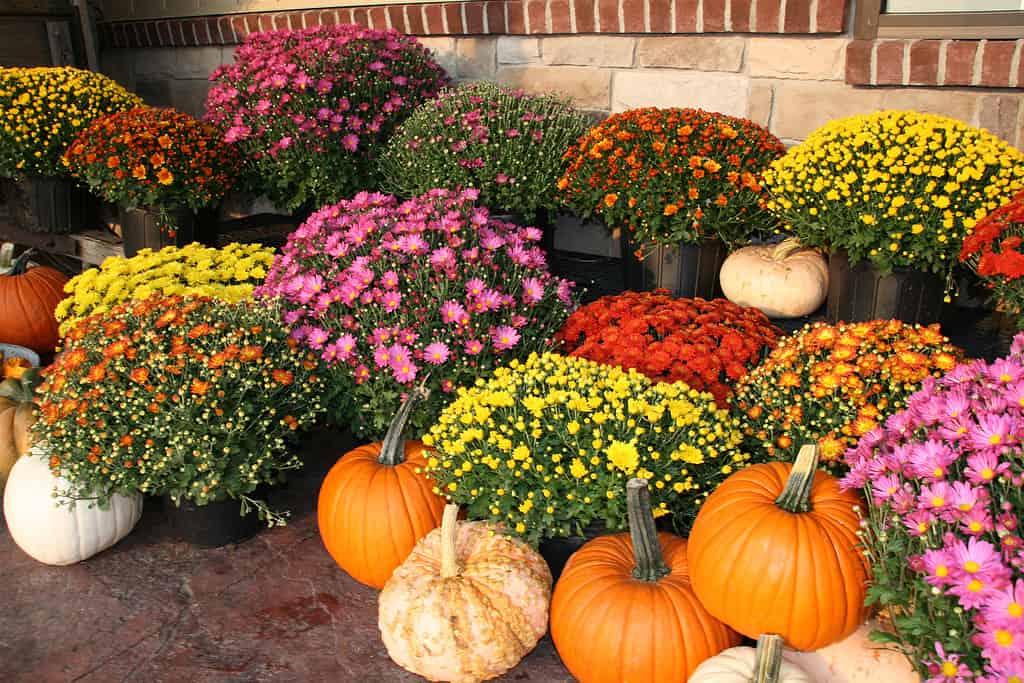
Mum is a falltime classic in Ohio. Choose late-flowering mums for blooming in September and October.
©SheilaYarger/ via Getty Images
2. Bottle Gentian
Ohio native bottle gentian is a beautiful deep blue wildflower that blooms in August but looks best in September and October.
One to two-foot-tall gentian forms clusters of flowers on stem tips that remain bud-like. Because its flowers never open wide, they rely on bumblebees for pollination. Strong bees pull their petals aside, drink nectar, and escape unharmed!
Cool growing conditions suit bottle gentian. It prefers a part shady spot in a well-drained position, so a shady rockery, raised bed, or shallow trough is ideal. Plant gentian out in spring for the best blooms, but new plants quickly establish as fall approaches if you desperately want them this year.
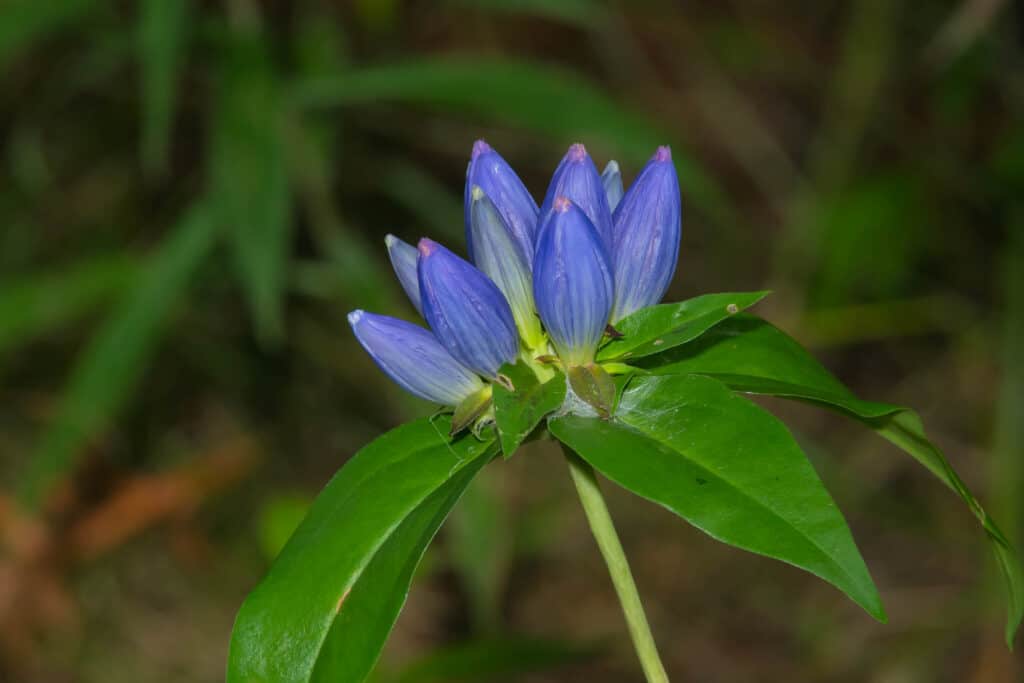
Only large bees, like bumblebees, can prise open bottle gentian flowers.
©iStock.com/PaulReevesPhotography
3. Pansies
Inexpensive pansies bring lots of fall-blooming color to Ohio. Given the right care, pretty pansies bloom in purple, red, yellow, and orange tones from fall until spring.
Plant seeds in mid-summer, or buy plugs from a garden center in the fall, then choose a sunny but sheltered spot and keep deadheading spent blooms. Versatile pansies suit flower borders, containers, hanging baskets, and window boxes, so there are plenty of options for attractive fall gardens.
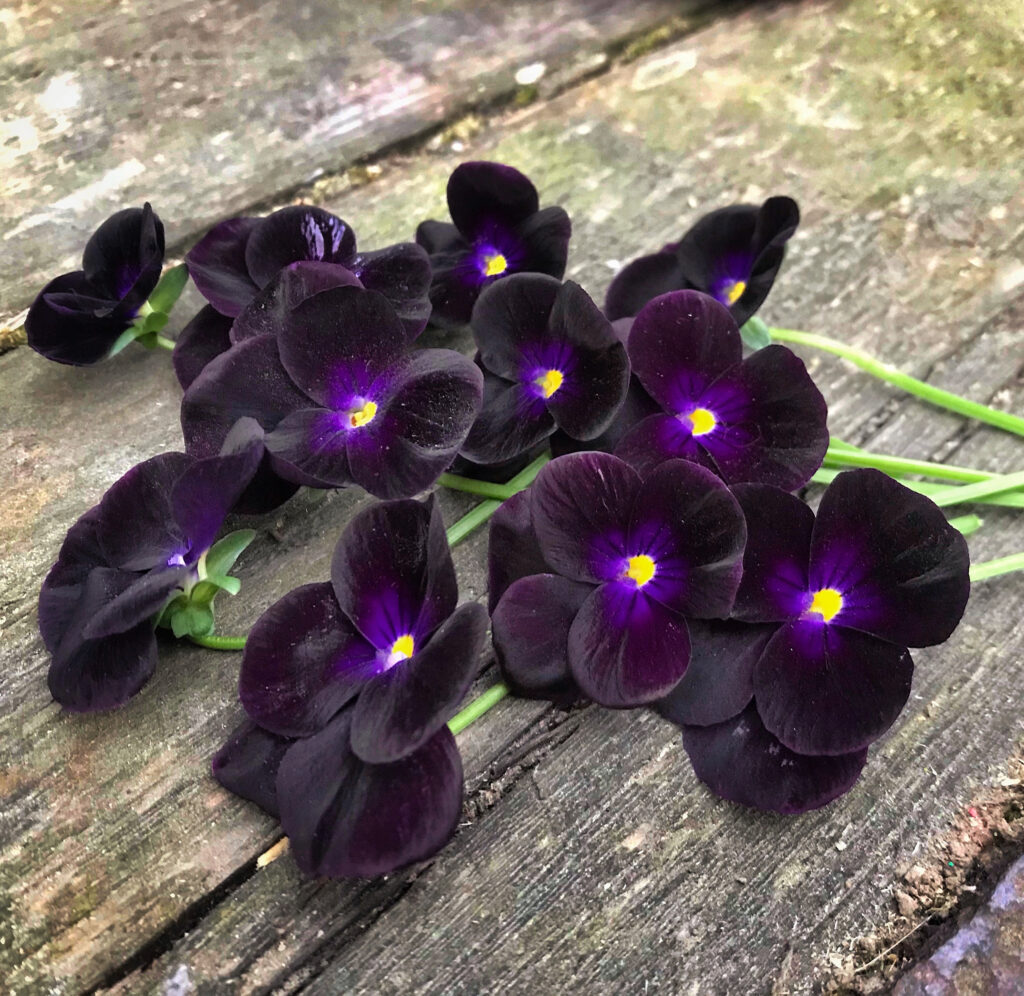
Inexpensive winter pansies can bloom from fall to the following spring.
©OlgaKuznetsova7/Shutterstock.com
4. Cardinal Flower
Bright red native cardinal flowers bloom in late summer and make it until the first hard frost. Did you know their name comes from the bright red of a Roman Catholic cardinal’s cloak? Cardinal flower’s tubular blooms attract hungry hummingbirds and large bees that desperately need fall-time nectar.
Plant cardinal flowers in partial shade in well-drained, fertile soil. The best time is spring, but ready-to-plant cardinal flowers will take in early fall, too.
This perennial wildflower dies down over winter, and you can help make sure they emerge the following year by applying a layer of mulch to their roots and crown in zone 5 (or zone 6 if the spot is exposed to cold wind and heavy rainfall.)
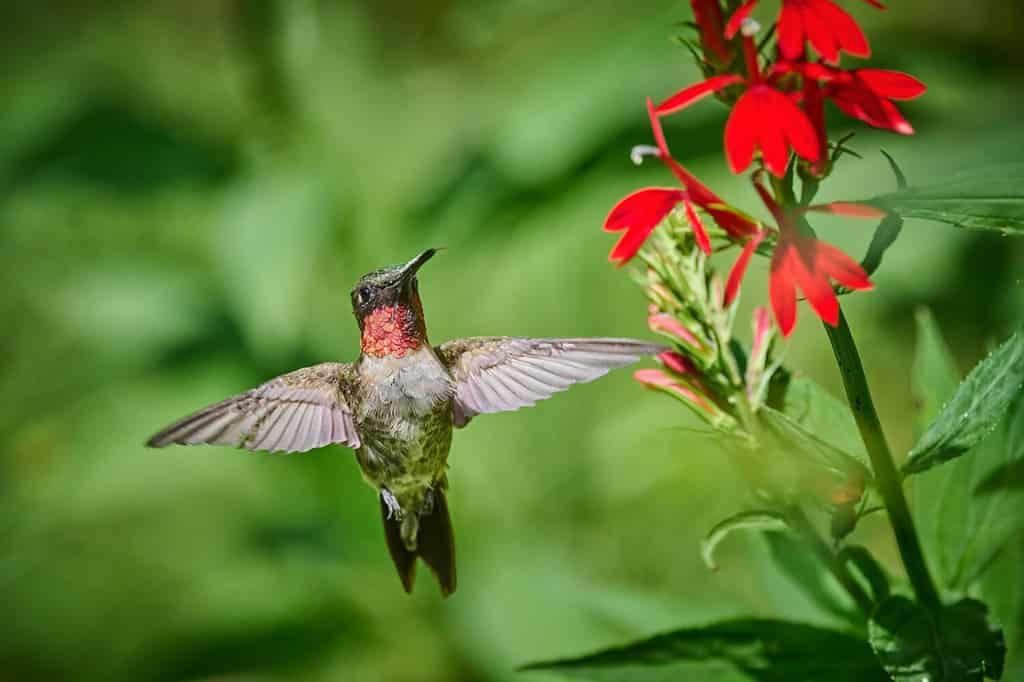
Ruby-throated hummingbirds love bright red cardinal flowers in fall.
©Patrick Jennings/Shutterstock.com
5. White Turtlehead
Another whimsically named wildflower is turtlehead. This fall-blooming beauty takes its common name from its two-lipped, hooded flowers that resemble (some folk think) a turtle’s head. Its fall-time blooms emerge white and take on delicate pink shades as they mature.
Turtlehead grows natively in Ohio. It’s found in shady woodland locations in fertile, moist soil. Replicate this in your yard, and turtlehead blooms from late summer until chilly frosts arrive.

White turtlehead is an Ohio native wildflower that enjoys moist, shady conditions.
©Karel Bock/iStock via Getty Images
6. Coneflowers
Reliable, colorful coneflowers blaze in Ohio’s fall yards. If you like low maintenance but bright blooms, coneflower is the obvious choice.
Purple, orange, yellow, red, pink, or burgundy foliaged coneflowers thrive in full sun but tolerate partial shade too. Add in well-drained soil, and that’s pretty much all cheerful coneflowers need.
Around three feet tall, coneflowers attract bees and give everything they have right up until hard frost strikes them down. It’s best to plant coneflowers in spring, but again, you can plant fully grown plants in early fall for a final blast of color.
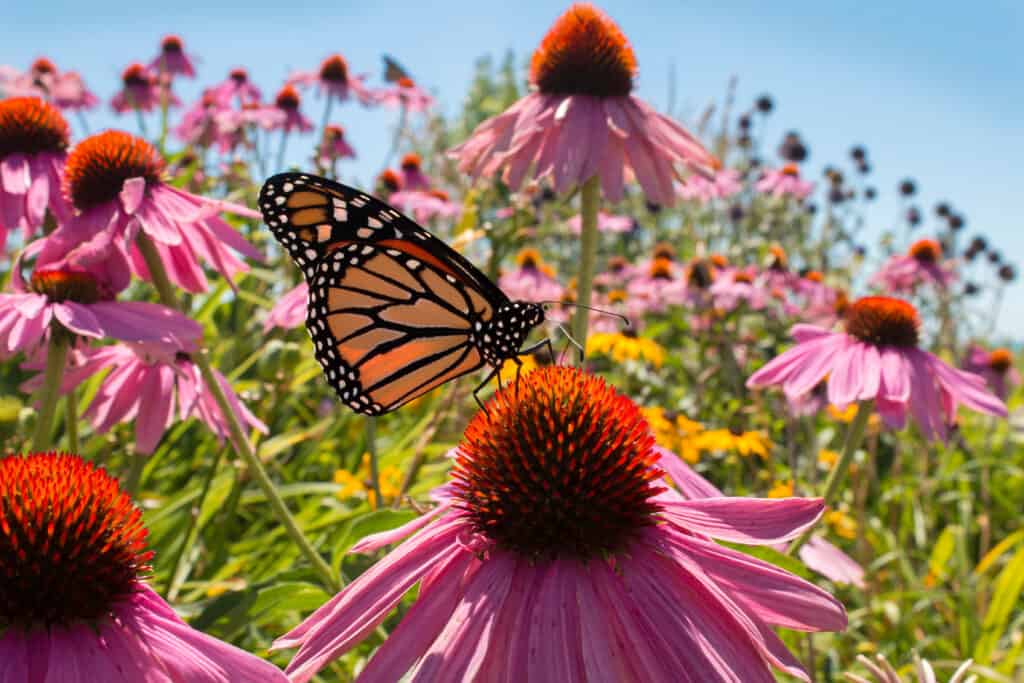
Coneflowers feed pollinators right up to the first frosts.
©Media Marketing/Shutterstock.com
7. Asters
A workhorse of Ohio’s fall-blooming yards. These gems bloom yellow disk-centered purple flowers from late summer right up until the hard frosts of October’s end. Traditionally, asters display purple petals, but pink and white versions look good too.
Upbeat asters reliably feed late working bees in Ohio, making them one of the best fall-blooming flowers. Plant yours at the front of a flower border or in a container that receives full sun. Water containers regularly and deadhead spent blooms as they turn brown for long-lasting displays.
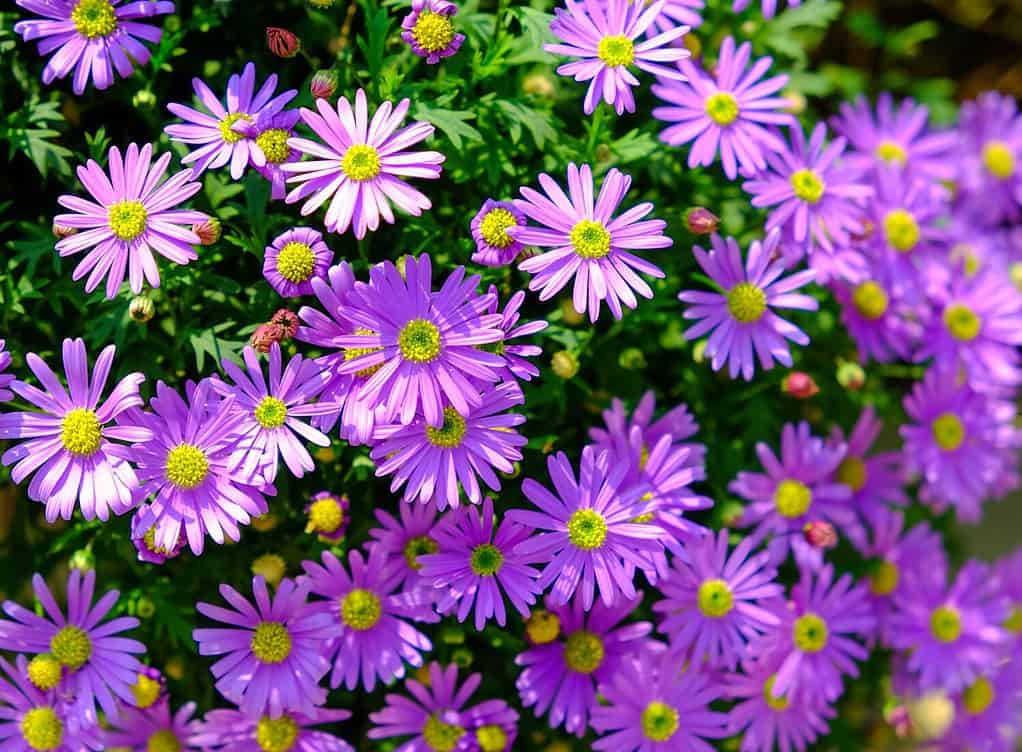
Asters are one of the final flowers to finish blooming in fall.
©Linhsiaowei/Shutterstock.com
8. Goldenrod
Prairie dweller goldenrod is an exciting way to bring vivid color, shapes, and textures to Ohio’s fall time yards.
Goldenrod lights up a dull yard with tiny, bright yellow blooms on four-foot-tall spikes. Insects adore this native prairie flower, and once it’s finished blooming in early November, its seeds feed hungry songbirds.
Plant goldenrod in a sunny spot with well-drained soil because it does not like wet roots. This versatile perennial is happy to re-locate at most times of the year, so a new clump planted out in late summer ready for spectacular fall time color will take quickly with plenty of water.
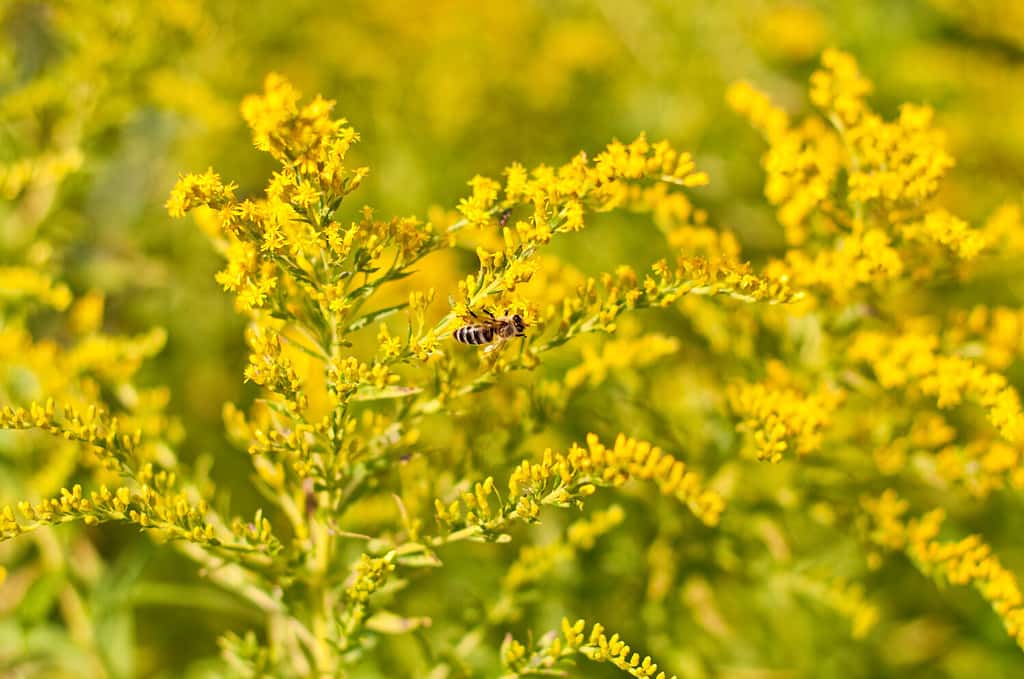
Fall-blooming goldenrod is an insect powerhouse for Ohio yards.
©Greg Kushmerek/Shutterstock.com
9. Tall Ironweed
Tall ironweed is, well, tall! In moist soil, it’ll reach ten feet, although five to eight feet is the average.
It’s an excellent candidate for the back of a sunny border where 10-30 small magenta flower clusters wave over coneflowers, asters, and goldenrods in fall.
Ironweed is a wildflower and native to Ohio, so pollinators flock to its nectar, especially the long-horned bee that times its lifecycle around ironweed and American painted lady butterflies. Tall ironweed is a host plant for this beautiful creature.
Plant this fall-blooming beauty in full sun or light shade with moist soil for the tallest spikes. Expect flowers in late July through to the harshest frosts and leave its architectural dead spikes to die down naturally. This ensures wildlife can make the most of every day.
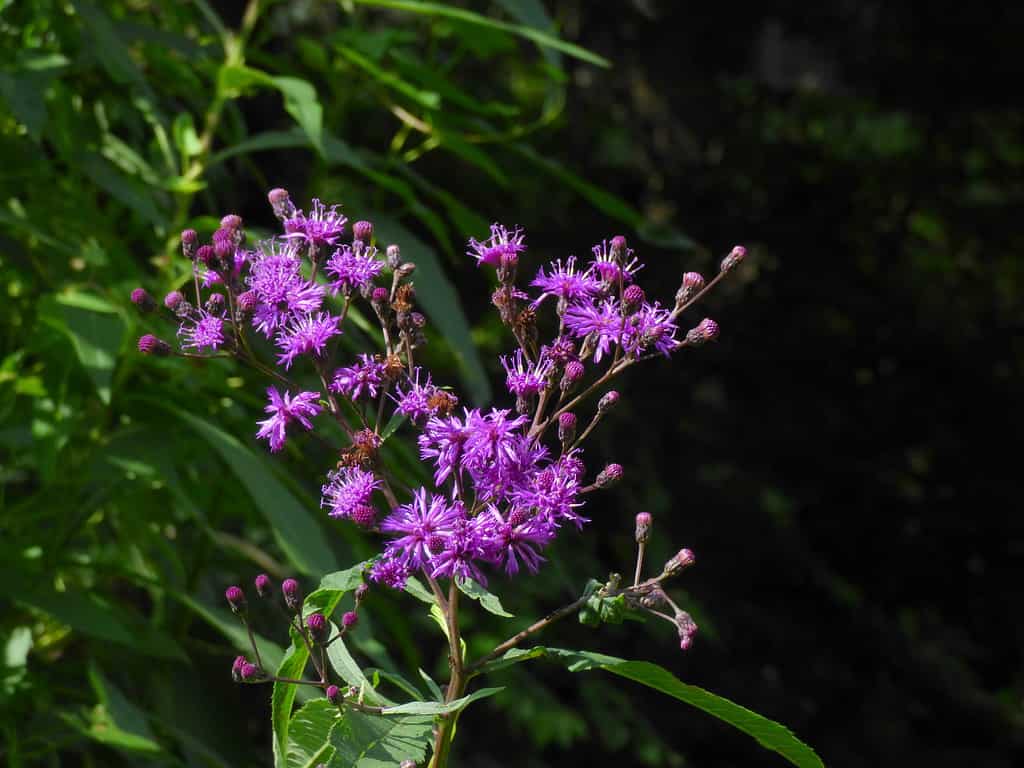
Ironweed is a host plant for American painted lady butterflies and essential to long-horned bees.
©Greg Hume / CC BY-SA 4.0 – License
10. Floss Flower
Floss flower is a perennial herb from North and South America that flowers stunning fluffy blue blooms from spring to late fall. In zones 5-6, it’s usually grown as an annual.
It’s a member of the aster family and highly attractive to bees and butterflies. This pretty pom-pom-shaped plant is short. It reaches 20 inches at most and is best used in rockeries, front-of-border displays, or groundcover.
Plant floss flowers out in spring or pop a fully grown plant out in early fall. They prefer full sun and well-drained soil of most types. Its flowers last until the first frost.
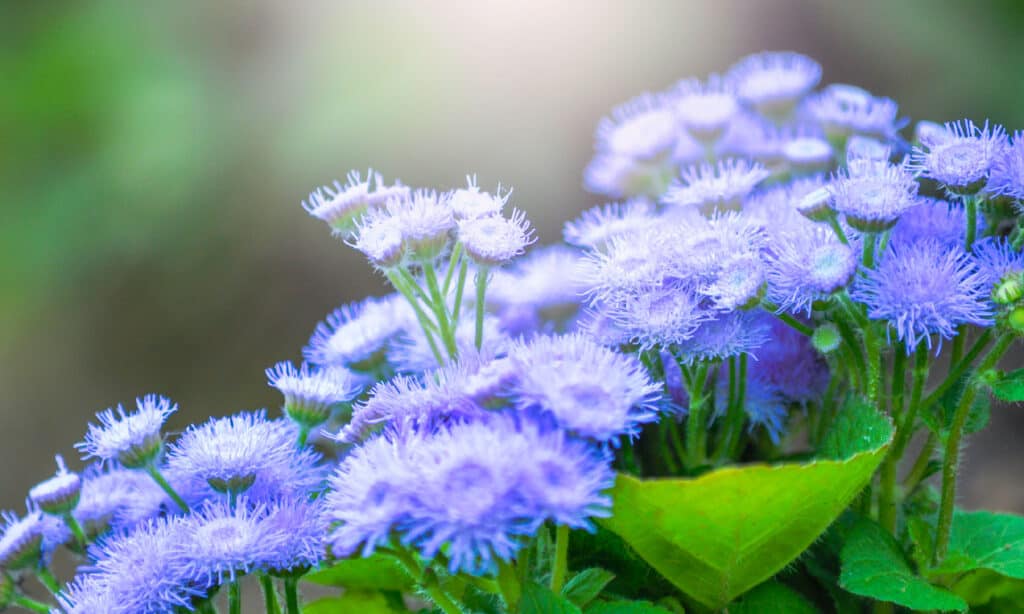
Fluffy blue floss flower is excellent front-of-border edging and ground cover.
©undefined undefined/Shutterstock.com
11. Black-eyed Susan
Let’s finish up with an American classic – black-eyed susan.
Botanically called rudbeckia, black-eyed susan blooms all summer and into fall with vivid yellow black-centered flowers. Insects love black-eyed susan, and Ohio’s gardeners use them as a fail-safe summer-to-fall flower in low-maintenance gardens.
Every yard should boast a patch of vibrant black-eyed susan to see them through to winter.
Plant this one-to-three-foot-tall beauty out in spring or early fall, in full sun or partial shade, and water it well until established.
Encourage fall-time blooms by deadheading faded flowers and applying fertilizer in late summer. Alternatively, some fall-loving gardeners prefer to cut back their black-eyed susans in July so they regrow and bloom at summer’s end.
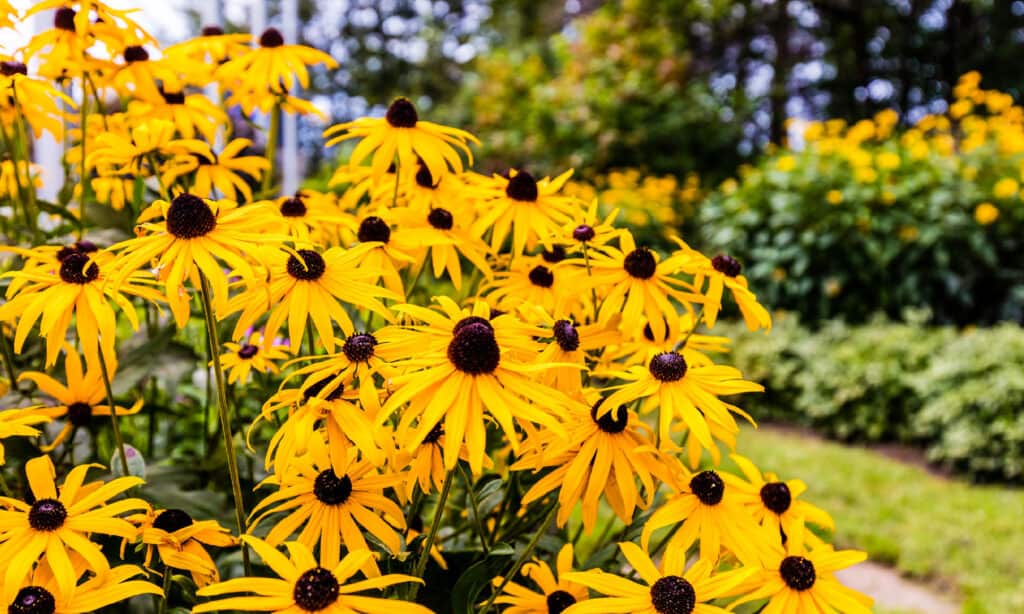
Black-eyed susan is an Ohio perennial with vivid fall-blooming flowers.
©iStock.com/Dopeyden
What Can I Plant in the Fall?
So that’s 11 of the best fall-blooming flowers for Ohio, but it’s never too early to think about winter color.
When fall flowers are giving their all, it’s time to plant out witch hazels, hellebores, mahonias, and winter-blooming clematis that bloom until spring rolls around.
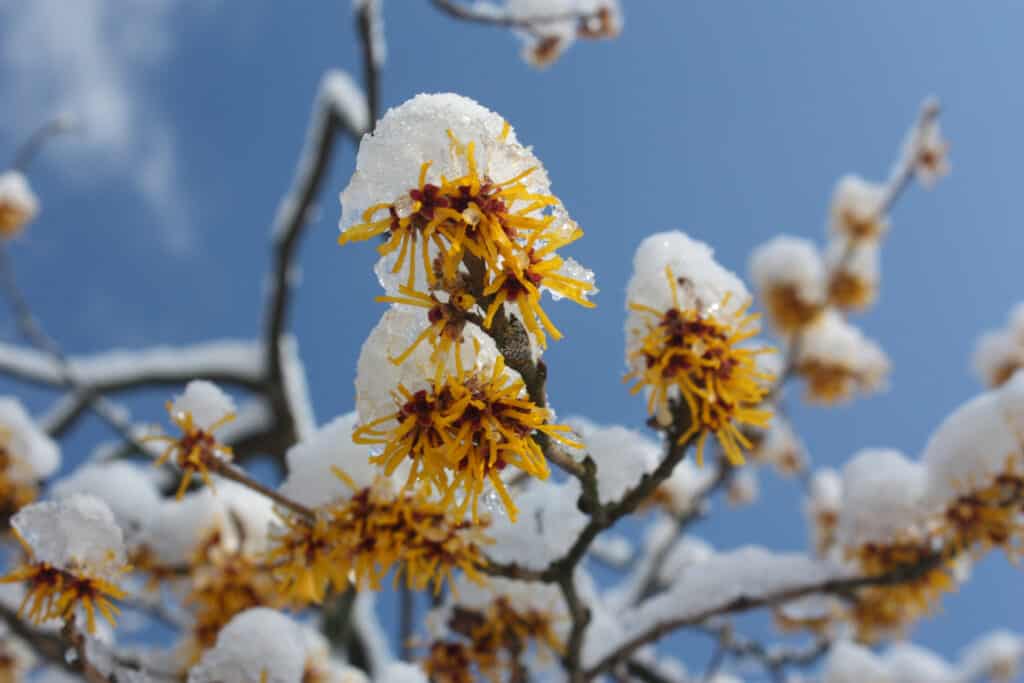
Plant witch hazel in the fall for vibrant winter-blooming flowers in Ohio.
©iStock.com/odluap
The photo featured at the top of this post is © MorganCJ/Shutterstock.com
Thank you for reading! Have some feedback for us? Contact the AZ Animals editorial team.






